

Technologies%20and%20cities%20-%20Bolay%20Kern. Smarter cities: more efficient, sustainable and liveable. November 14, 2011 Emmanuel Lagarrigue, Senior Vice President Strategy & Development at Schneider Electric, offers his take on the future of the city.

By Joanne The figures are well known but arresting. Cities today cover 2% of the Earth’s surface, are home to 50% of the world’s population, consume 75% of global energy, and give off 80% of greenhouse gas emissions. And cities are growing: by 2050, they will be home to 70% of the world’s population. As the world wonders how to meet the challenge of the growing demand for energy and resources while at the same time drastically reducing global carbon emissions, one thing is clear: this challenge will be won, or lost, in cities.
Living in a Sustainable City - Blog. How technology in cities can help deliver a sustainable future. Singapore is working to reduce both traffic congestion and air pollution through intelligent transportation solutions.
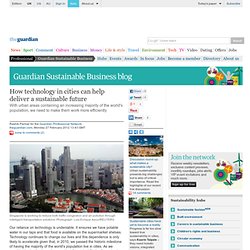
Photograph: Luis Enrique Ascui/REUTERS Our reliance on technology is undeniable. It ensures we have potable water in our taps and that food is available on the supermarket shelves. Technology continues to change our lives and this dependence is only likely to accelerate given that, in 2010, we passed the historic milestone of having the majority of the world's population live in cities. As we consider the implications, the question of sustainability is often raised. Information technology has the unique capability of being able to capture the ever-increasing amounts of information generated in the world around us – whether it is sensors that monitor traffic on the roads, the passage of water through pipes or the GPS signals from mobile phones.
People want to live in cities where there's a high quality of life. 1. 2. 3. A city should be considered a "system of systems". Science & Environment - Sustainability in the new urban age. The growing number of cities on the planet could provide a solution to many of our environmental and social problems – if we re-think the way they operate.
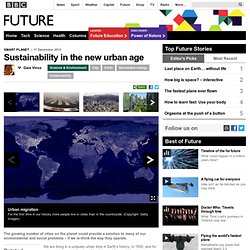
We are living in a uniquely urban time in Earth’s history. Science & Environment - China's eco-cities: Sustainable urban living in Tianjin. It takes less than an hour on the new high-speed train line to travel the 150 kilometres (93 miles) southeast from Beijing to Tanggu, the dirty coastal port town of nearby Tianjin – the world's fifth biggest port.
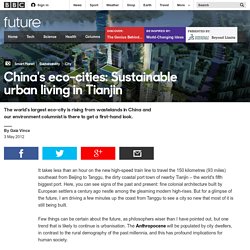
Here, you can see signs of the past and present: fine colonial architecture built by European settlers a century ago nestle among the gleaming modern high-rises. But for a glimpse of the future, I am driving a few minutes up the coast from Tanggu to see a city so new that most of it is still being built. Few things can be certain about the future, as philosophers wiser than I have pointed out, but one trend that is likely to continue is urbanisation. The Anthropocene will be populated by city dwellers, in contrast to the rural demography of the past millennia, and this has profound implications for human society. Nowhere will this be felt more keenly than in China, home to more than 1.3 billion people. Building a blueprint Sustainable living. Anthropocene-symposium-program-11_Oct_2012. Masdar City > Sustainability and the City. This is because more than half the world’s population now lives in cities, a percentage that is expected to rise to 70% by 2030, and because cities today are responsible for over 70% of global CO2 emissions.
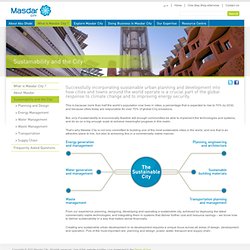
But, only if sustainability is economically feasible will enough communities be able to implement the technologies and systems, and do so on a big enough scale to achieve meaningful progress in this realm. That’s why Masdar City is not only committed to building one of the most sustainable cities in the world, and one that is an attractive place to live, but also to achieving this in a commercially viable manner. From our experience planning, designing, developing and operating a sustainable city, achieved by deploying the latest commercially viable technologies, and integrating them in systems that deliver further cost and resource savings – we know how to deliver sustainability in a way that makes sense financially. Sustainability & Resource Productivity Practice. By 2025 megacities of 10 million or more people will house more than half the world’s population and contribute more than half of global GDP.
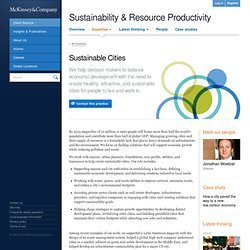
Managing growing cities and their supply of resources is a formidable task that places heavy demands on infrastructure and the environment. We focus on finding solutions that will support economic growth while reducing pollution and waste. We work with mayors, urban planners, foundations, non-profits, utilities, and businesses to help create sustainable cities. Our role includes: Supporting mayors and city authorities in establishing a fact base, defining sustainable economic development, and delivering solutions tailored to local needs. Well-designed sustainability measures deliver multiple benefits. Similarly, new approaches to public–private partnerships can help build relationships that create value for both cities and solutions providers. Allen.